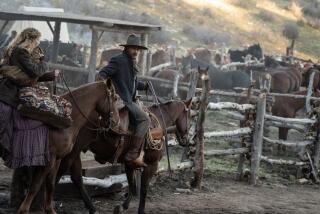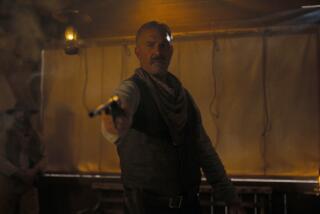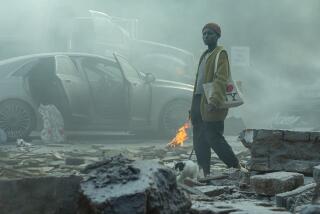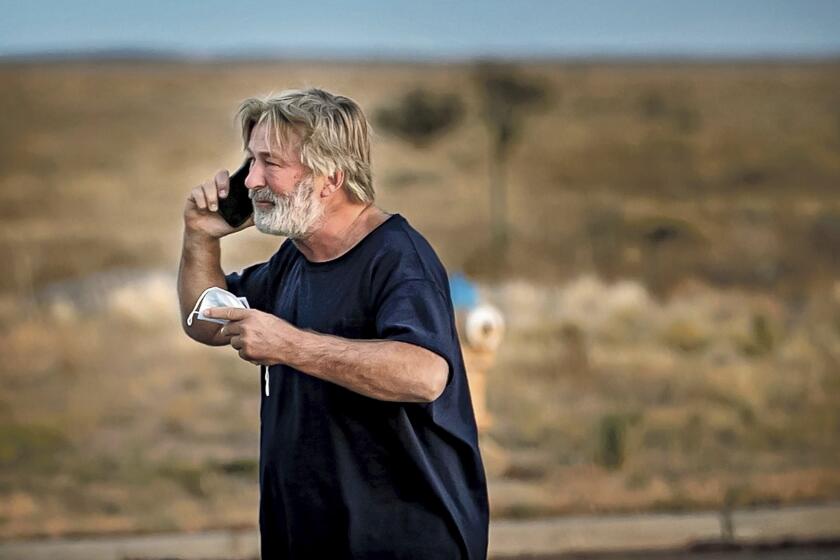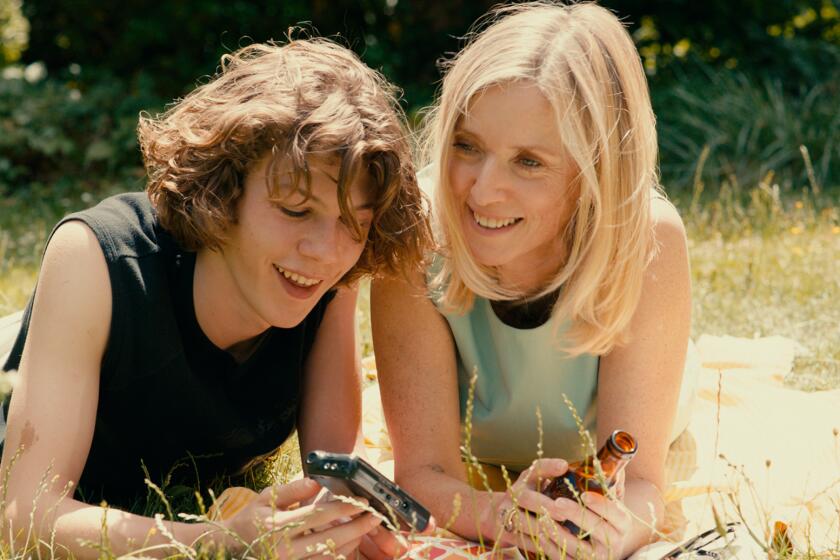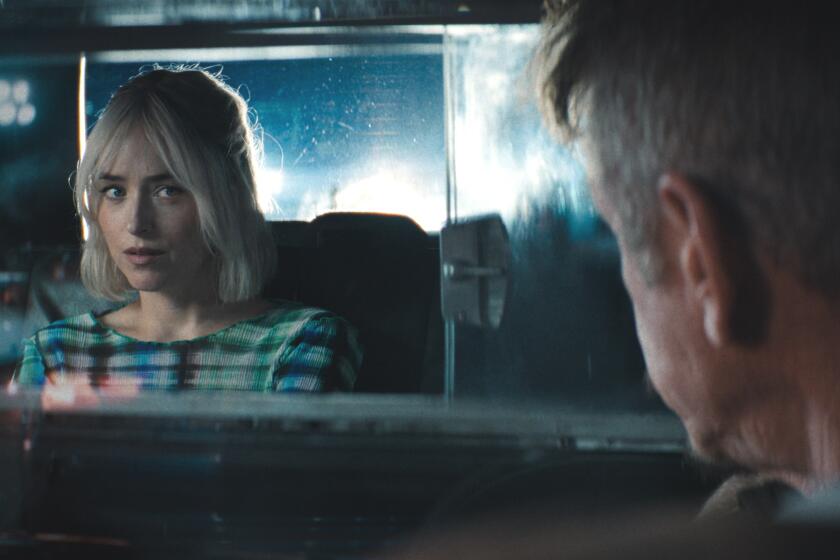A Tribute to the People of Lebanon
Lebanese-born Australian journalist Daizy Gedeon, in her beautiful and moving “Lebanon . . . Imprisoned Splendour,” explains that she felt the need to come to terms with the country she left with her family in 1970 at the age of 5. She also wanted to fill “the gap between anger and poverty” in the image that the war-torn nation has had in the media since conflict broke out in 1975.
What Gedeon has done so astutely is to make of her documentary a personal memoir celebrating the ancient and diverse culture of Lebanon. This rich context enables her to stay above the fray and to suggest that religious differences, at one time viewed with a long-established tolerance, have in recent decades been widely exploited for profit by an array of foreign powers at the expense of the Lebanese people. She comes to believe that Lebanon, with a long history of foreign occupation, will survive and endure, thanks to the resilience and compassion of its people.
“You never stop being Lebanese,” says Omar Sharif, even though he has become the most internationally renowned Egyptian film star of all time. But Sharif was born Michel Shalhoub in Lebanon and has never forgotten his roots. Sharif serves as the film’s special guest, and his elegant presence fills the film much like the passages quoted from Khalil Gibran.
“Lebanon . . . Imprisoned Splendour” will play one week at the Music Hall in Beverly Hills starting Friday. (310) 274-6869.
*
The Midnight Special Bookstore’s “Documental” series, featuring documentary and experimental films and videos, will present on Saturday two different programs, one at 7 p.m. and another at 9 p.m. Among the offerings in the early show is Lee Buric’s deeply evocative, painfully personal “Resistance,” which in a mere 19 1/2 minutes probes a history of violence--political and personal--that has haunted her family for several generations.
Buric opens “Resistance” with beautiful images of nature centering on a beehive, recalling that when she was 4 her paternal grandfather, a beekeeper, told her that if she remained calm the bees would not sting her. Employing layered and fragmented images and an array of natural sounds, Buric relates her grandfather’s escape from the former Yugoslavia in 1943. She moves on to relate how both her maternal grandmother and her own mother had violent, abusive husbands, and that as a timid teenager she was raped by a total stranger. In recalling so much violence, Buric means to express her determination to transcend it--to reach back and connect with that long-ago moment when her grandfather gave her the confidence to confront those bees with such calmness.
In the 9 p.m. show is writer-director James Napoli’s 28-minute “Nobody Gets Hurt,” in which an actor (Ivan Migel) is kidnapped by a desperately marginalized man (Christopher Boyer) who has dangerously confused “reality TV” with reality.
Migel’s Lloyd, a short burly guy, is already becoming typecast playing criminals, and Boyer’s Dave sees a chance for recognition and glory in capturing a “most wanted criminal” who killed four people in the process of robbing a Phoenix bank. He doesn’t want to hear that Lloyd is only an actor playing a part.
Although essentially a filmed playlet, Napoli is resourceful in building and sustaining suspense. He succeeds in eliciting fine portrayals from Migel and Boyer in what is a scary comment on the power of TV to blur the line between reality and “reenactments.” (310) 306-7330.
*
That Quentin Tarantino has at last announced that his next film will be “Jackie Brown,” loosely based in the Elmore Leonard novel “Rum Punch,” became doubly gratifying to his admirers when he revealed that his comic crime caper would star in the title role the one and only Pam Grier. (She heads a cast that includes Samuel L. Jackson, Robert Forster, Bridget Fonda, Michael Keaton and Robert De Niro.)
In the so-called “blaxploitation” pictures of the early ‘70s, Grier emerged as queen of the genre, a regal statuesque beauty with a commanding presence and personality who could also project humor and vulnerability. Grier should have gone on to become a big star. That she didn’t stands as a devastating comment on the fate of black actresses in Hollywood in recent decades.
Grier can be seen in one of her most popular pictures, “Foxy Brown” (1974) at midnight Saturday at Raleigh Studios’ Chaplin Theater as the fourth and final film in the American Cinematheque’s “An Evening With Jack Hill.”
In 1973, Hill and Grier had scored a big hit for American International Pictures with “Coffy,” in which Grier played a nurse who goes after the drug dealers who turned her sister into an addict. AIP wanted a quick follow-up but decided not to call it a sequel.
In “Foxy Brown,” Grier avenges the murder of her fiance, an undercover government agent, and thereby takes on an all-powerful call girl/drug ring headed by a bigot with a southern accent (Kathryn Loder) and her boyfriend (Peter Brown). “Foxy Brown” is hastily thrown together, totally improbable trash, yet its mediocrity throws into relief Grier’s formidable star quality: You believe her no matter what. Hill himself considers the film an embarrassment, but it’s fast-moving and fun. The clothes are a kick: sideburns, bell-bottoms, wide lapels, clunky shoes and hip-huggers.
The Hill tribute commences at 6:15 p.m. with “Spider Baby,” a campy low-low-budget 1964 horror flick that is amusing enough to approach the so-bad-it’s-good category. It tells of three demented young adults--two sisters, one blond (Beverly Washburn), the other brunet (Jill Banner), with a thing for spiders, and their all-but-drooling bald brother (Sid Haig, an exploitation stalwart of the era and a Hill regular who turns up in “Foxy Brown” as a bearded airplane pilot).
Cared for by their devoted, protective family chauffeur (Lon Chaney Jr.), they live in the countryside in a hilltop Victorian house. A predatory cousin (Carol Ohmart), accompanied by her nice-guy brother (Quinn Redeker) and her mercenary attorney (Karl Schanzer), try to get their hands on the property. What ensues is laughably predictable and silly, but “Spider Baby” is a professional effort in which Hill makes an attempt at style, aided by Al Taylor’s shadowy black-and-white cinematography and Chaney’s willingness to play straight.
Following “Spider Baby” the Cinematheque will screen Hill’s 1961 half-hour UCLA student film “The Host,” and then present at 8:45 p.m. a double feature, “Pit Stop” (1969), a gritty stock-car racing drama starring Brian Donlevy (his final role), Richard Davalos (best remembered as James Dean’s brother in “East of Eden”) and Ellen McRae (later known as Ellen Burstyn); and “The Big Bird Cage” (1972), in which Grier plays a revolutionary who infiltrates a women’s prison. (213) 466-FILM.
*
The American Cinematheque commences “Traveler in Time: The Film & Video Work of Chris Marker,” tonight with “Level 5,” a high-tech mystery not available for preview.
More to Read
Only good movies
Get the Indie Focus newsletter, Mark Olsen's weekly guide to the world of cinema.
You may occasionally receive promotional content from the Los Angeles Times.
